|
|
Post by Dave Homewood on Jun 11, 2015 17:23:55 GMT 12
I remember being disappointed seeing the new paint at Wanaka in 2006, Zac, that was merely a temporary sharks mouth for the airshow so it matched the other two P-40's at the show which had permanent sharks mouths, and frankly i think it was very cool to see three together with the same nose markings like that. The more permanent marking worn now first appeared in public at the 2012 Wings Over Wairarapa. |
|
|
|
Post by Peter Lewis on Jun 11, 2015 18:08:37 GMT 12
Another stalwart of the NZ airshow scene is Goodyear FG-1D Corsair ZK-COR. Starting out with the RNZAF as NZ5648 in August 1945, it inhabited the famous Rukuhia graveyard from 1949 until escaping to Jack Asplins service station just up the road in 1954. Restored to visually complete taxiing condition for the airport (re)opening in 1965, it later moved to MoTAT in the late 60s. Reclaimed under somewhat controversial conditions, it then departed for North America in 1971 but ended up impounded by the Canadian Customs department. Released, it passed on to the USA where, restored, it flew again as N55JP in July 1982. Shipped to the UK in April 1989 it flew under its American registration until becoming G-BXUL with the Old Flying Machine Company as part of the Breitling Fighters Team. Returning to New Zealand in early 2004, it flew again at Hobsonville on 10Feb2004. Registered as ZK-COR on 23Feb2006 to Air Tight Trust, Auckland. Transferred to The Old Stick & Rudder Co.Ltd., Auckland, 14May2012 the Corsair is now based at Masterton. At the show it flew in the Friday evening twilight session 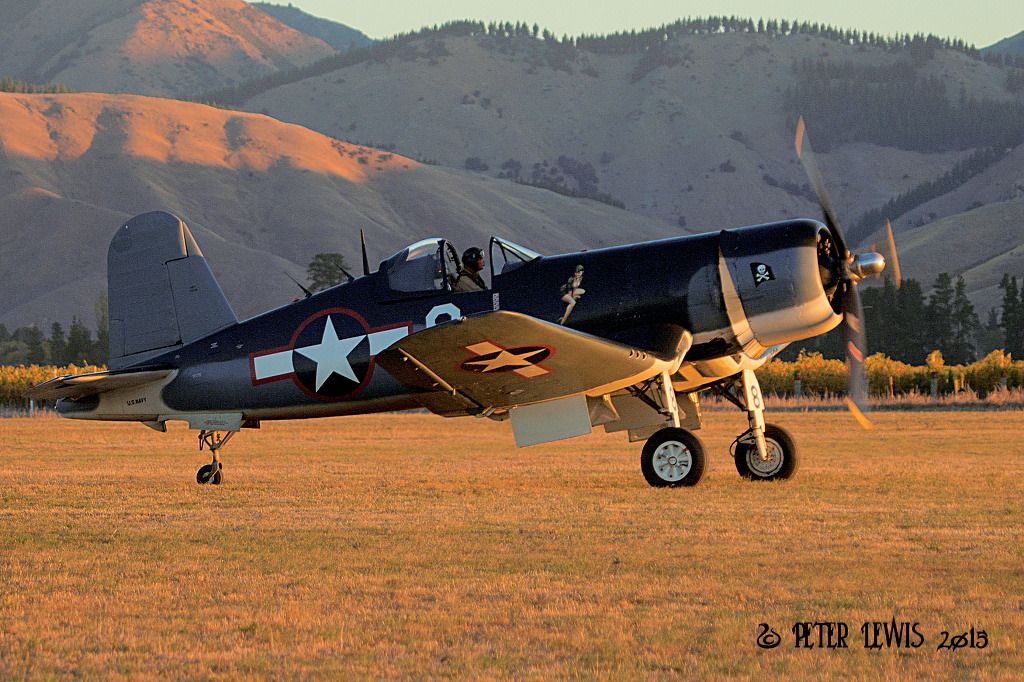 and frequently again over the rest of the weekend. 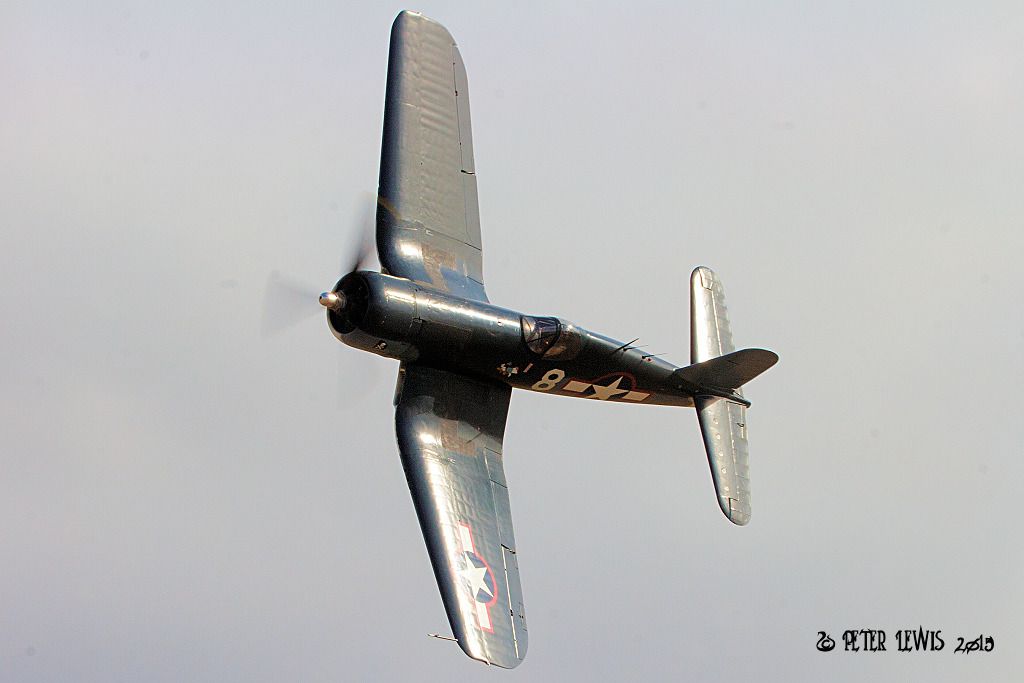  |
|
|
|
Post by Peter Lewis on Jun 12, 2015 8:40:45 GMT 12
Unlike P-40N ZK-CAG, Curtiss P-40E Kittyhawk ZK-RMH is an ex-RNZAF machine. Serving as NZ3009 from April 1942, it ended up at the Rukuhia scrapyard in 1948. Swapped for less-restorable P-40 NZ3048 in 1960, it was then restored by Darby & McGarry using the wings off NZ3201. Displayed static at MoTAT in the 1960s - 70s. To Pacific Aviation Ltd. for rebuild as ZK-RMH for Old Flying Machine Company, first post-restoration flight at Whenuapai 19Dec97. It went to the UK in April 1999 becoming G-CCBE with Classic Aviation, Duxford which is where the Chinese Nationalist markings '88' were applied. Returning to NZ in 2003, it resumed life at ZK-RMH with The Old Flying Machine Co.(NZ) Ltd., Auckland, later passing to Air Tight Trust, Masterton in 2006 and The Old Stick & Rudder Co.Ltd., Auckland in mid-2012. 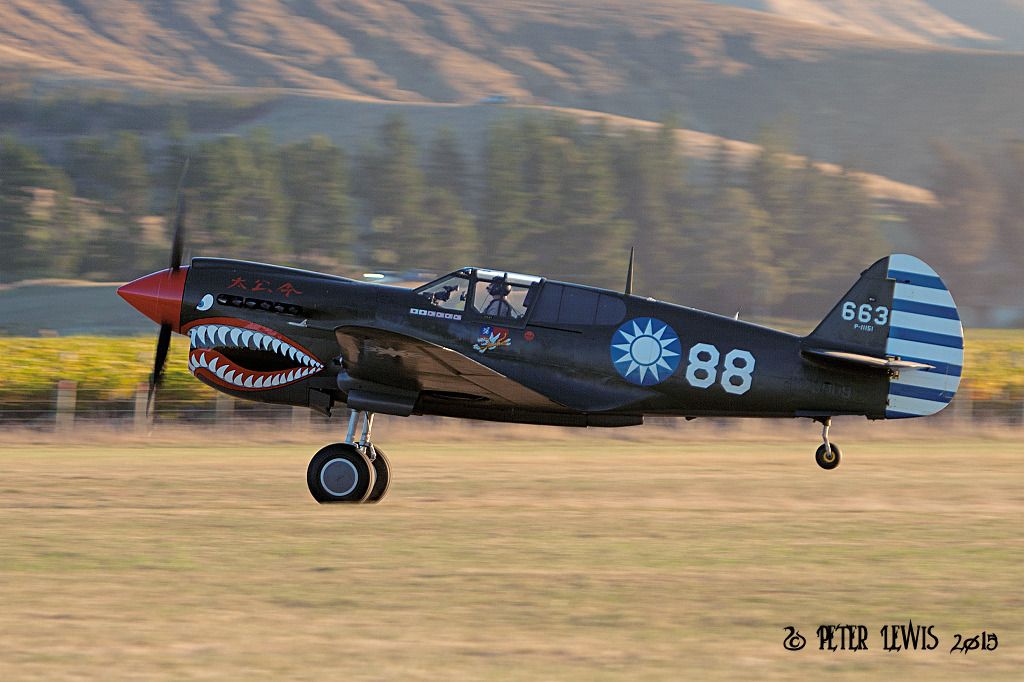  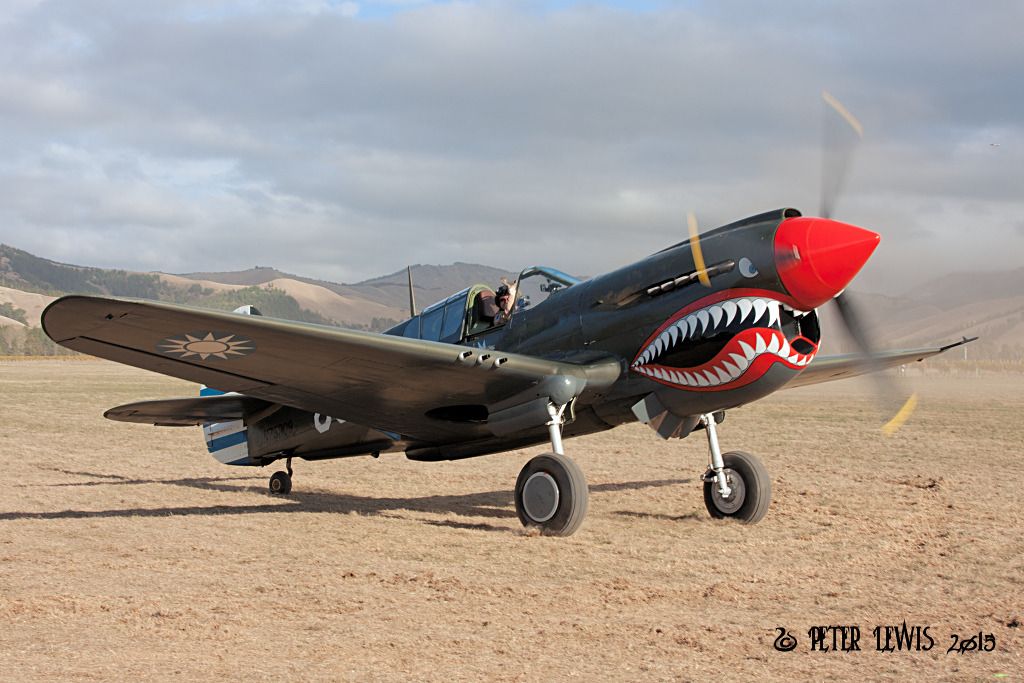 |
|
|
|
Post by shorty on Jun 12, 2015 12:10:52 GMT 12
Peter mentioned that CAG has different RAAF serials on each side, that is exactly as it was marked when we recovered it. Have never been able to find out why this (and some other P-40s) had dual identities.
|
|
|
|
Post by Deleted on Jun 12, 2015 13:39:20 GMT 12
I remember reading that in John King's book. ADF-Serials has no information for A29-1050 beyond serial and C/Ns. A very strange thing.
|
|
|
|
Post by Peter Lewis on Jun 12, 2015 17:23:41 GMT 12
The second Spitfire at the show was Spitfire Mk.IX ZK-SPI. Starting life with the RAF in September 1944 as PV270 it went intially to 9MU at Cosford and passed on to 82 MU at Lichfield in October 1944. Went into active RAF service in the Mediterranean theatre. To Italian AF as MM4014 in 1947. To Israeli AF in 1953 as 20-80 where it was used in training role. To Burmese AF in 1955 and used for attacking Kuomintang guerrilas on the north-eastern border with China. Put into storage in 1956 and mounted on a pole at Hmawbi AB near Rangoon in in early 1970s. In 1995 the aircraft was brought to Mingaladon AB to be preserved in the Defence Services Museum. Aquired by Brendon Deere in New Zealand. This Spitfire is actually made up of PV270's fuselage and Spitfire SL633's wings. A complete rebuild was undertaken by ITL Aviation Ltd in New Zealand. First post restoration flight was completed at RNZAF Ohakea on 18th March 2009. PV270 has been restored to represent the Wing Leader's Spitfire flown from Biggin Hill in 1944 by Brendon Deere's uncle, the legendary New Zealander Air Cdre Al Deere.  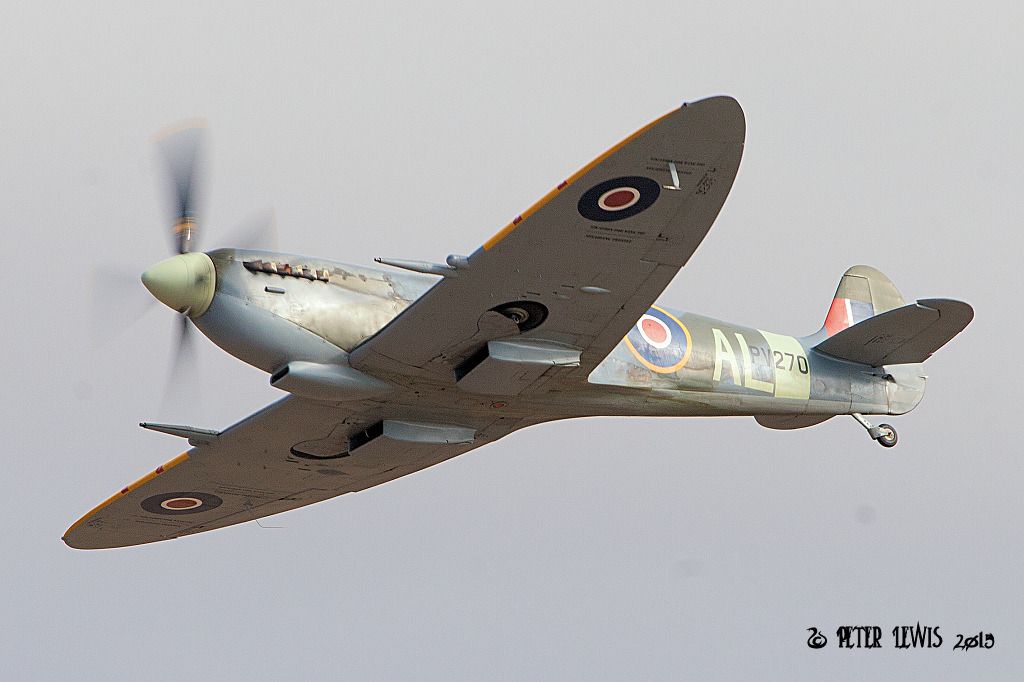 |
|
|
|
Post by Peter Lewis on Jun 12, 2015 17:26:38 GMT 12
Peter mentioned that CAG has different RAAF serials on each side, that is exactly as it was marked when we recovered it. Have never been able to find out why this (and some other P-40s) had dual identities. To confuse the enemy? I know that Mitsubishi Zeros intenionally had non-sequential constructors numbers and blackout blocks to conceal exactly how many had been built. |
|
|
|
Post by baz62 on Jun 12, 2015 17:44:52 GMT 12
Peter mentioned that CAG has different RAAF serials on each side, I seem to recall reading that the aircraft had been rebuilt during the war using the the major parts (wings perhaps) of another and they decided to incorporate the donor aircraft's serial number on the completed product. |
|
|
|
Post by Peter Lewis on Jun 12, 2015 19:35:45 GMT 12
The Grumman TBM-3E Avenger ZK-TBE has quite a convoluted history. Starting out with the US Navy as Bu91110 in July 1944, it was withdrawn from service in 1953 @ 1422hrs. Stored, it was sold in 1958. Becoming N6827C with TBM Inc., Tulare, CA in 1963 it then passed through a number of US owners before being exported to New Zealand in November 1992 having run up 4110hrs. Registered as ZK-TBM on 18Nov1992 to Alpine Deer Group Ltd., Wanaka, it was painted as 'NZ2518' and worked the airshow circuit until sold into Australia in May 1999. As VH-TBM owned by Malitone in Queensland it didn't do much, and returned to New Zealand in February 2012 under Bredon Deere's ownership. By that time ZK-TBM had been issued to a Cessna 525B CJ3 Citation so the Avenger became ZK-TBE with Brendon's company ITL Aviation Ltd. of Palmerston North. The original Avenger NZ2518 was the famous 'Plonky' flown by aviation identity Fred Ladd, and was shot down by AA fire over Rabaul 5Jun1944. 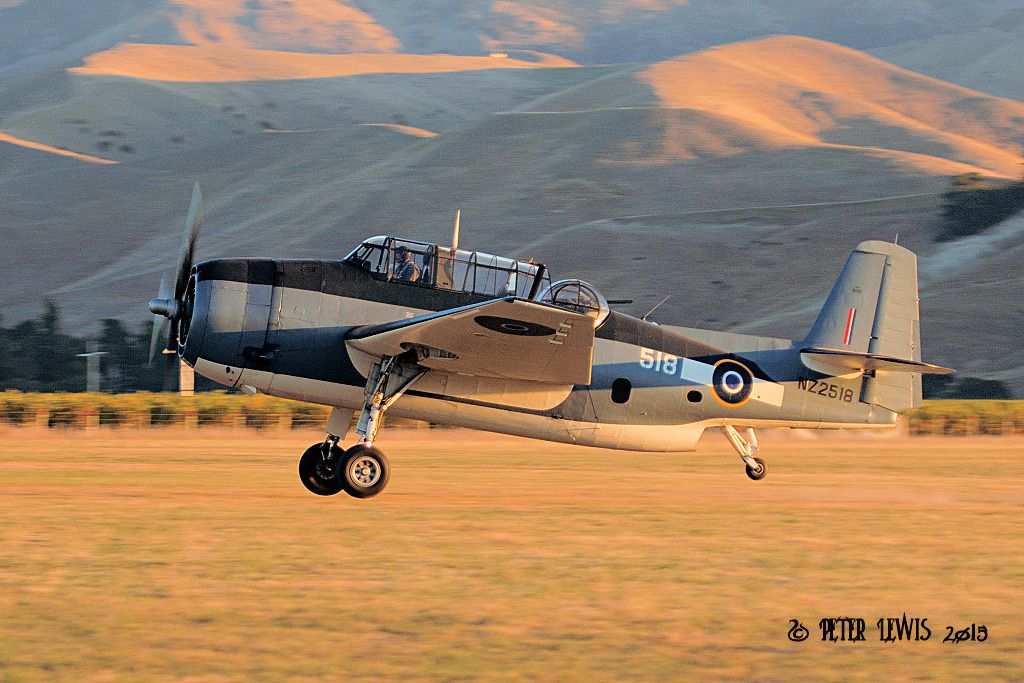  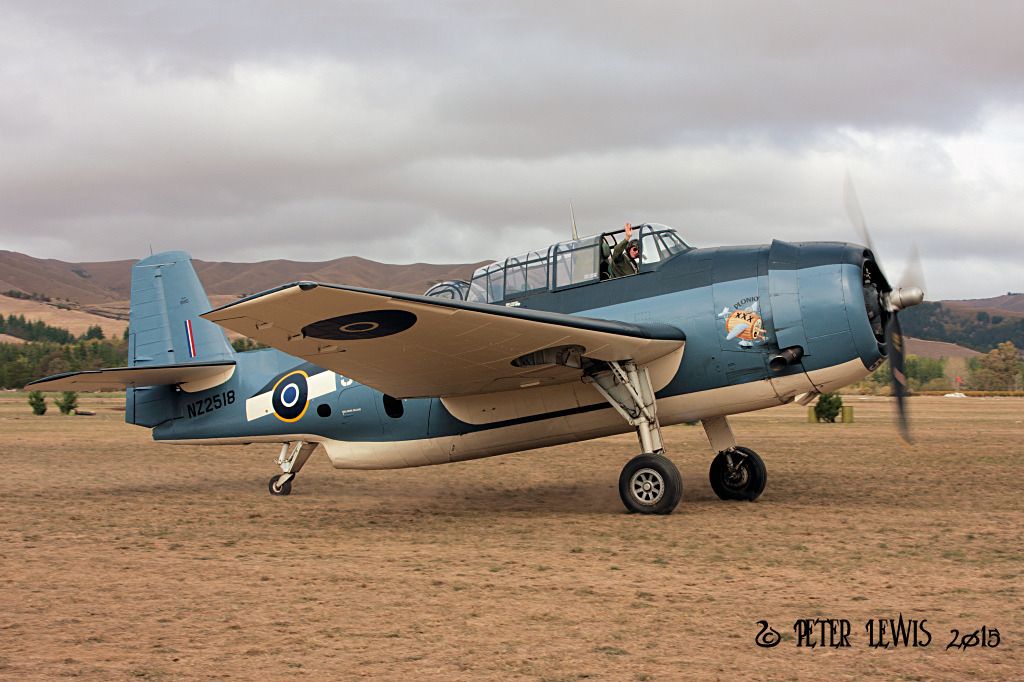 |
|
|
|
Post by shorty on Jun 12, 2015 21:52:15 GMT 12
Not so Baz regarding the P 40 here are two photos showing the fuselage after we removed it from the jungle area. The interesting thing is that the aircraft has different serials on each side. the faded side with the US star showing through has the serial A29-1050 but the side with the codes is serialled A29-448. I can not find an explanation for this anywhere.448 was a P40N-1 but 1050 was a P-40N-35. 448 was written off after a hydraulic and electrical failure There were at least three others with dual serials. 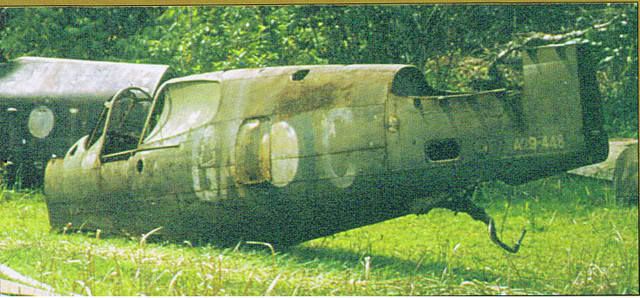  |
|
|
|
Post by Dave Homewood on Jun 12, 2015 22:06:03 GMT 12
Maybe someone doing a bit of inventory accounting to fool the boss after they'd mislaid one of the aeroplanes?
|
|
|
|
Post by Peter Lewis on Jun 13, 2015 8:42:13 GMT 12
The Yakovlev Yak-3M is a replica of the wartime Yak-3 recently manufactured by Yakovlev for the warbird market using the original plans and dies. These are powered by Allison V-1710 engines. ZK-VVS originally went to the USA where it flew as N74FT until badly damaged in a take-off accident at Reno that destroyed its wings and undercarriage in about 1999. After the accident, the fuselage and tail group only, changed hands a few times and were later coupled with a Czech-built Yak-11 wing by Chris Prevost at Sonoma, northern California. It was from there that Graeme Frew acquired the aircraft and shipped it to NZ where some work was done by Mike Nicholls before JEM Aviation took it on as a full time restoration. (When imported into New Zealand in November 2004 it was still in an unrepaired state). After a major rebuild at Omaka during which it was converted to two-seater status, it flew again on 26Mar2012. Currently based at Omaka.  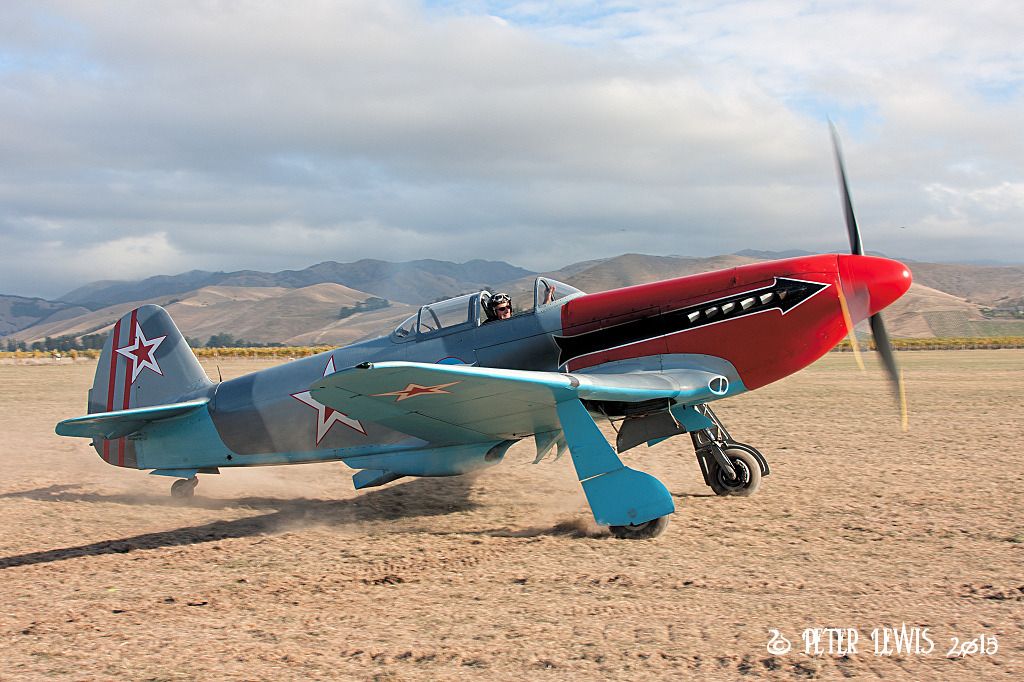 |
|
|
|
Post by Dave Homewood on Jun 13, 2015 12:19:27 GMT 12
Are these Yaks considered replicas?? I thought the Yakovlev-built Yak 3M's were considered 'late production' considering they are built by the original manufacturer to original specs and materials, etc.
|
|
|
|
Post by Peter Lewis on Jun 13, 2015 15:59:54 GMT 12
That opens a whole can of worms - let's not go there, here.
|
|
|
|
Post by Peter Lewis on Jun 13, 2015 16:18:48 GMT 12
The Supermarine Type 379 Spitfire FR.XIV NH799 was built at Aldermaston and delivered to 9 MU (Cosford) in March 1945. To 215 MU in May and then transferred to the RAF in India. Arrived in India on 28th July and attached to Air Command South East Asia and served with 49 Sqn. To Indian Air Force on 29Dec1947. Little is known of its service in the IAF. Doug Arnold purchased and shipped it back to the UK in 1981. Stored at Blackbushe and Bitteswell until it was acquired by the Fighter Collection and restoration began in 1986. Sent to Historic Flying Ltd for completion in 1993. Sold to Sir Tim Wallis of the Alpine Fighter Collection operating out of Wanaka, New Zealand. The first post restoration flight was made on the 21st of January 1994 as G-BUZU. Shipped on the 14th of February to New Zealand where it was registered ZK-XIV. Flight testing was conducted on the 31st of March and the aircraft then displayed at the Warbirds over Wanaka show the next three days. On the 2nd of January 1996 the plane flipped inverted on take-off, almost killing the pilot Tim Wallis. Purchased, from the insurers, by Brian Hare of Hamilton and American partner Paul Page. Restoration commenced in 1997 with AvSpecs in Rotorua and continued when the company shifted to Ardmore. Ownership passed to Murray Miers and the aircraft was eventually completed just before the Omaka air show, the first post-rebuild flight taking place at Ardmore of 2April 2015. The Spitfire arrived at Omaka at sunset in the afternoon of Friday 3rd, after a 75 minute direct flight from Ardmore. The final paint markings had not been applied at that time. Well done, a great effort by all those involved. 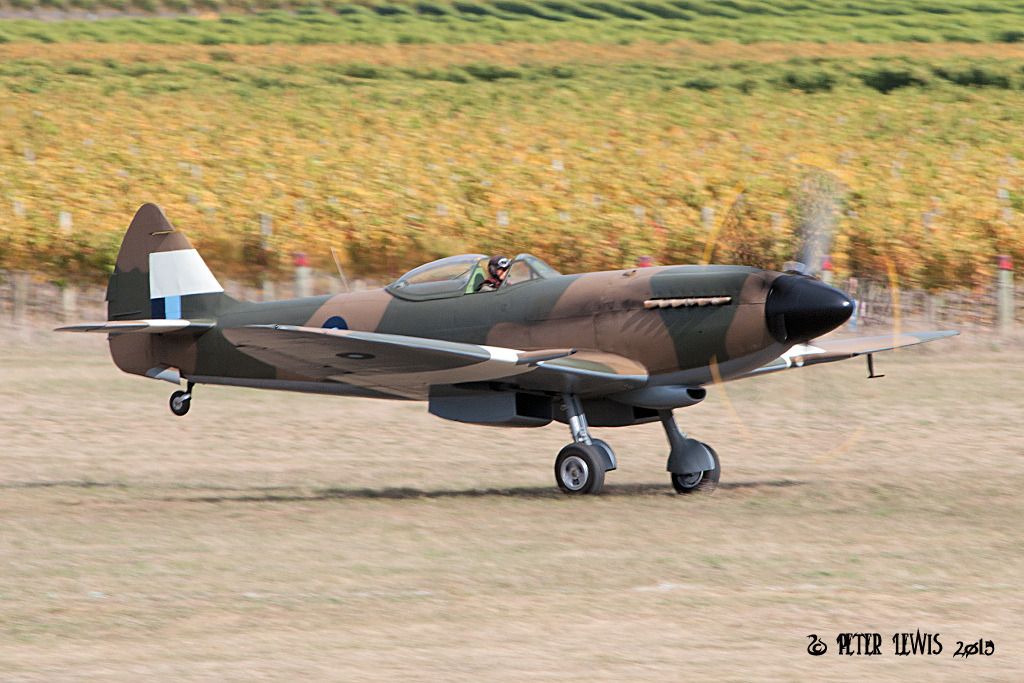 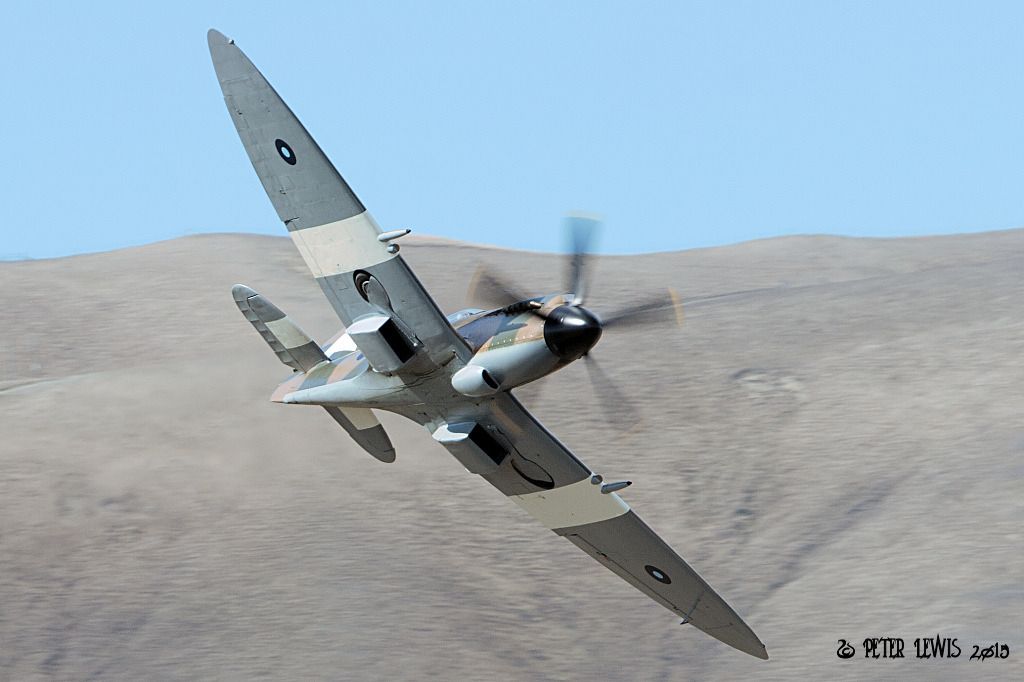 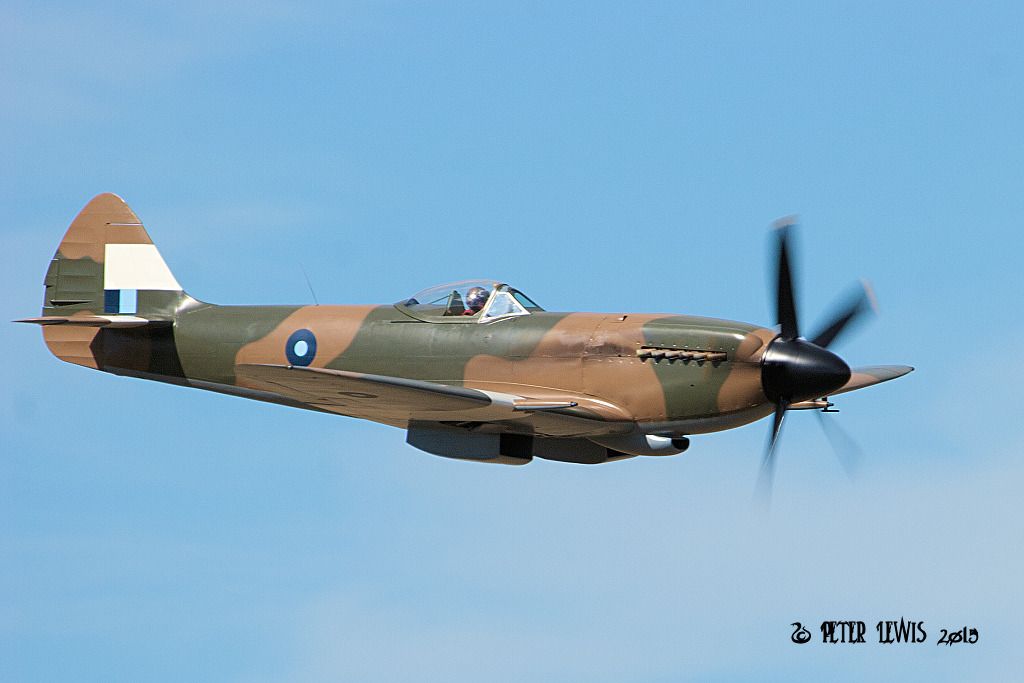 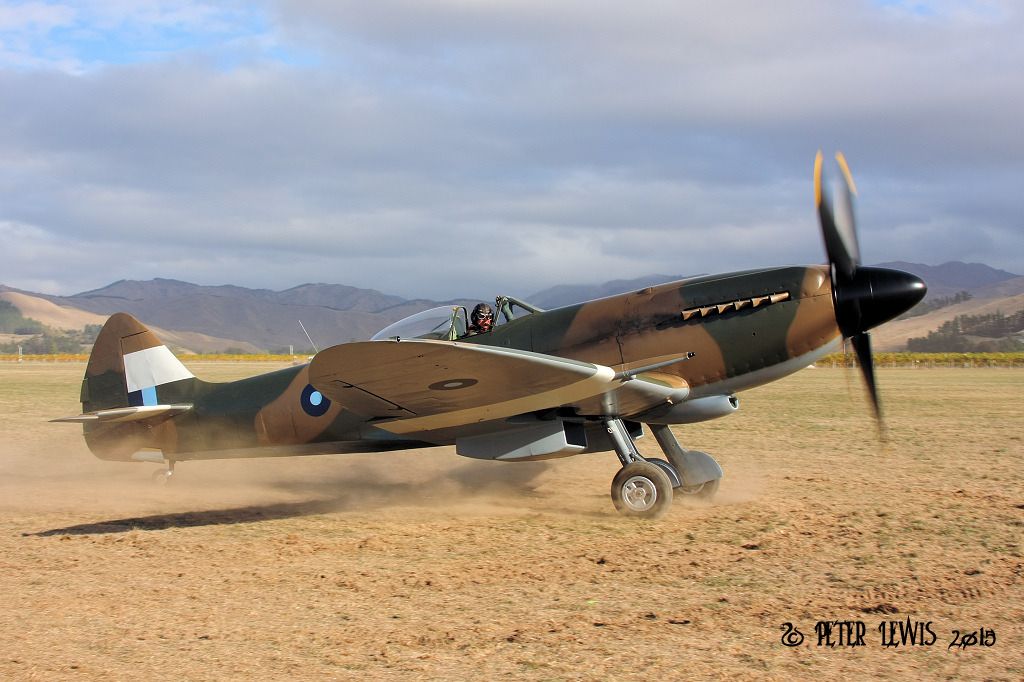 |
|
|
|
Post by Peter Lewis on Jun 13, 2015 22:27:29 GMT 12
The Yakovlev Yak-3M ZK-YYY, being a conversion from a Yak-11 trainer, is a much older aircraft than ZK-VVS. The Yak-11 was developed from the radial-engined Yak-3U, and served with many Warsaw-pact countries. Examples were also exported to a number of African, Middle Eastern and Asian states, including Egypt. This airframe started life with the Egyptian Air Force in 1947 and was stored from 1970 to 1985 before sale to the Alain Capel & Jean Salis partnership. Passing through France, it then migrated to Neil R. Anderson, Fort Worth, Texas from 1986 where it was allotted the markings N11SN. Bought by Ray Hanna in 1990 it was moved to Russia in 1991 for rebuild by Yakovlev as Yak-3U. During this time the marks G-BWOE were allotted to it as from March 1996.After a six-year restoration it arrived back at Duxford in May 1997 still requiring some work. It was shipped to NZ ex Duxford in December 2003 for completion of the restoration to airworthy Yak-3M standard and installation of the Allison engine. Still unfinished, it passed into the hands of Arthur Dovey in February 2005. The work was then completed and the aircraft took its first post-restoration flight at Ardmore on 14Apr2005. Now based at Wanaka as Soviet AF “12” ![[IMG]http://i104.photobucket.com/albums/m169/flyernzl/airshows/ZK-YYY_IMG_3396-Edit_zpsbj2tpami.jpg[/IMG]](http://i104.photobucket.com/albums/m169/flyernzl/airshows/ZK-YYY_IMG_3396-Edit_zpsbj2tpami.jpg) ![[IMG]http://i104.photobucket.com/albums/m169/flyernzl/airshows/ZK-YYY_IMG_4595-Edit_zpsdon5guwx.jpg[/IMG]](http://i104.photobucket.com/albums/m169/flyernzl/airshows/ZK-YYY_IMG_4595-Edit_zpsdon5guwx.jpg) |
|
|
|
Post by Dave Homewood on Jun 13, 2015 23:17:09 GMT 12
Now that one is a replica!  |
|
|
|
Post by Peter Lewis on Jun 14, 2015 8:50:32 GMT 12
Info received from Graham Orphan:
" . . . the issue of the dual serials of the P-40s has been explained in an earlier edition of CW. Essentially, several aircraft were incorrectly stencilled by Curtiss at the factory and were later overpainted in Australia to reflect the correct numbered sequence in the RAAF inventory.
When the aircraft were abandoned at Tadji, (Aitape), PNG, the fuselages were mostly left on their sides and when Shorty and Monty recovered them in 1974, the sides facing the sun had faded to reveal the earlier, incorrect serial numbers so that when they were inspected they displayed these mysterious dual serials.
Many theories were expounded, including the suggestion that this may have been a ruse to trick Japanese intel into thinking there were more RAAF P-40s than were in service, however it was not so. I owned another dual i.d. machines, this being P-40N-1 A29-405. I was able to prove the theory once and for all by rubbing back the protected side to reveal the earlier number under the paint on that side, demonstrating that the aircraft originally carried the same serial on both sides. "
Thanks for the clarification Graham.
|
|
|
|
Post by Peter Lewis on Jun 14, 2015 9:06:45 GMT 12
Something that has certainly not been seen in the air for many years is the Fiesler Fi 103, also known as the V1 (Vergeltungswaffen or Vengeance Weapon 1). The V1 was perhaps the world’s first cruise missile and the first guided missile to be used en-masse. The pulsejet engine had a grid of flap-valve springs in its inlet, which alternately admitted fresh air and then were blown shut against ram pressure by the ignition of the duct. The vibration made the engine noise and led to the infamous ‘buzz-bomb’ noise which would suddenly stop when the V1 was over its target. The 85kg replica/reproduction/call-it-what-you-will that took part in the airshow was 75% of full size, and the ducted fan units ran on battery power so it was quite earily quiet in flight. Basicaly it is a radio-controlled model, and the crew certainly seemed to have mastered the art of contolling it both in the air and on landing. The catapault pyrotechnics seemed to be just stage effects, and played no part in the actual launching the beast. I am in awe of the work that went into this. 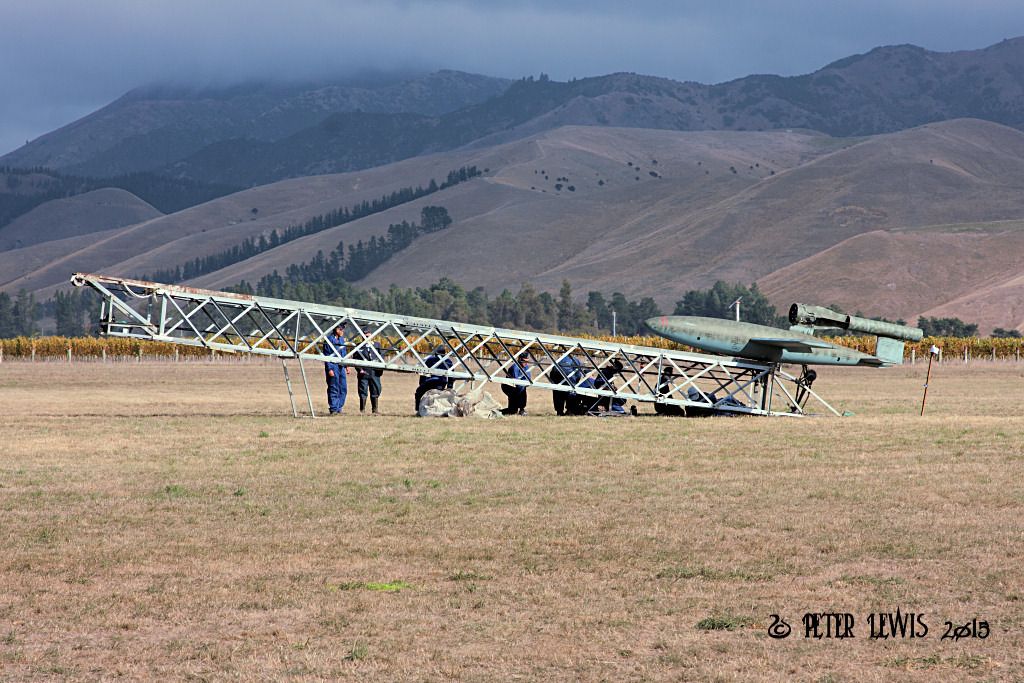 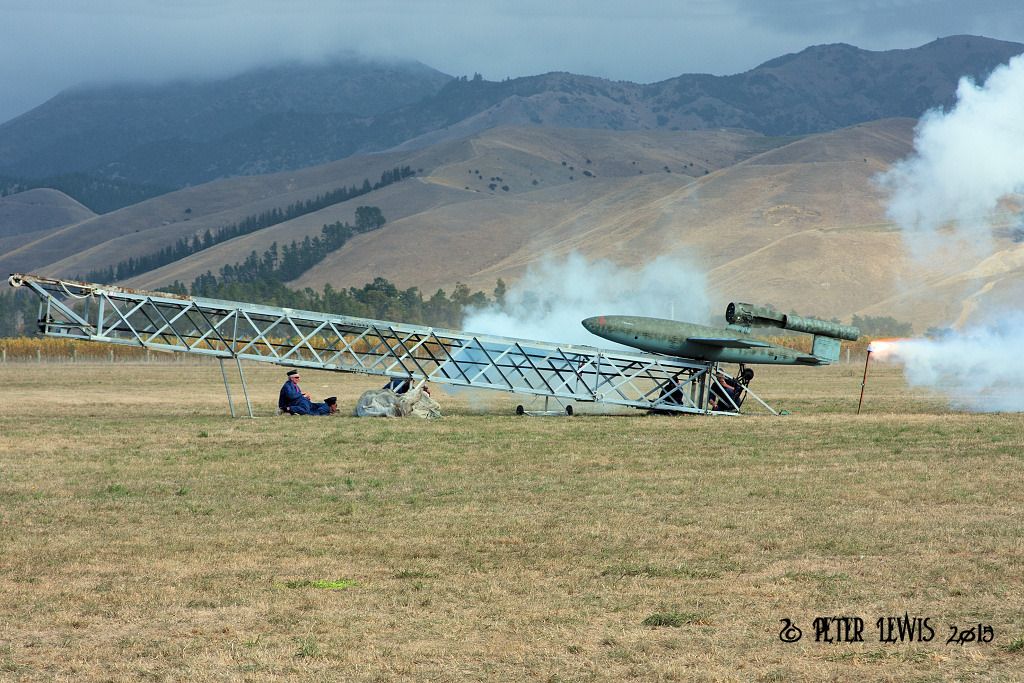 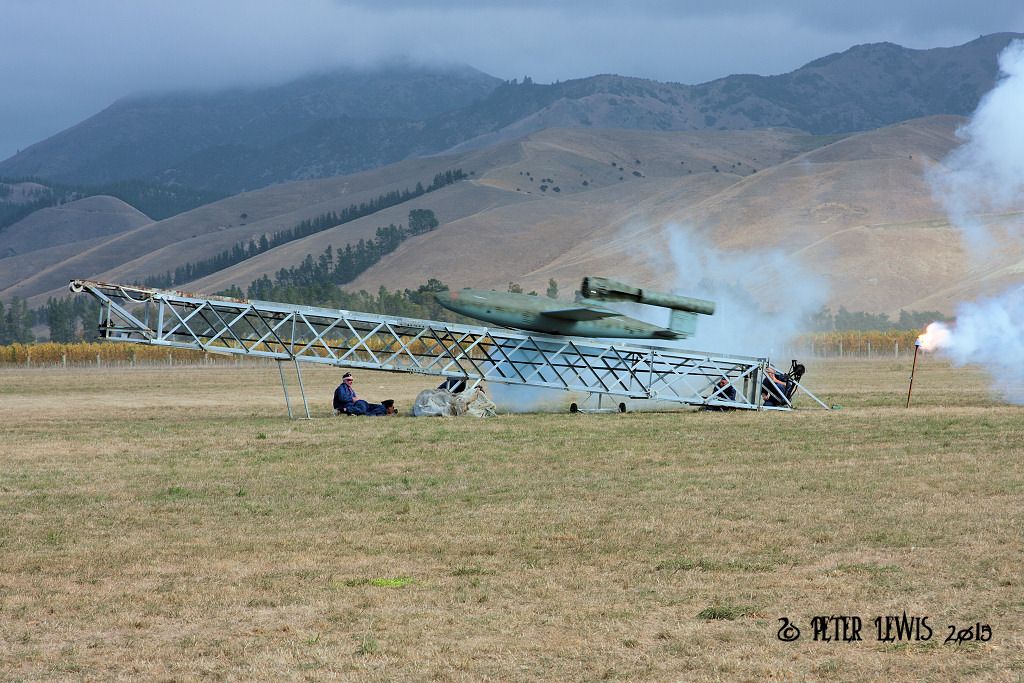 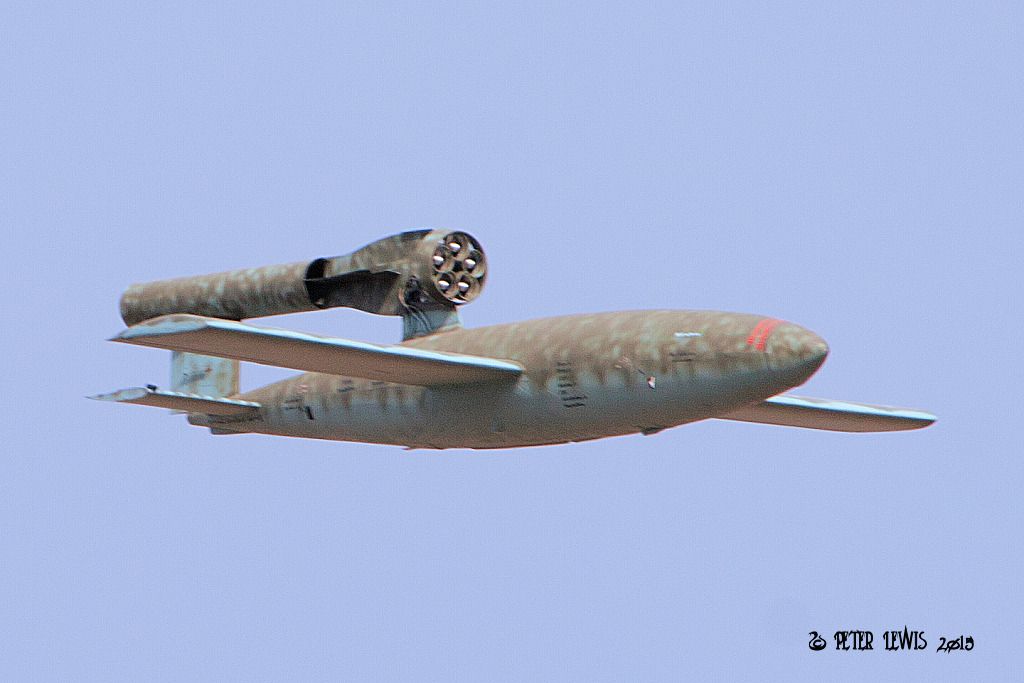 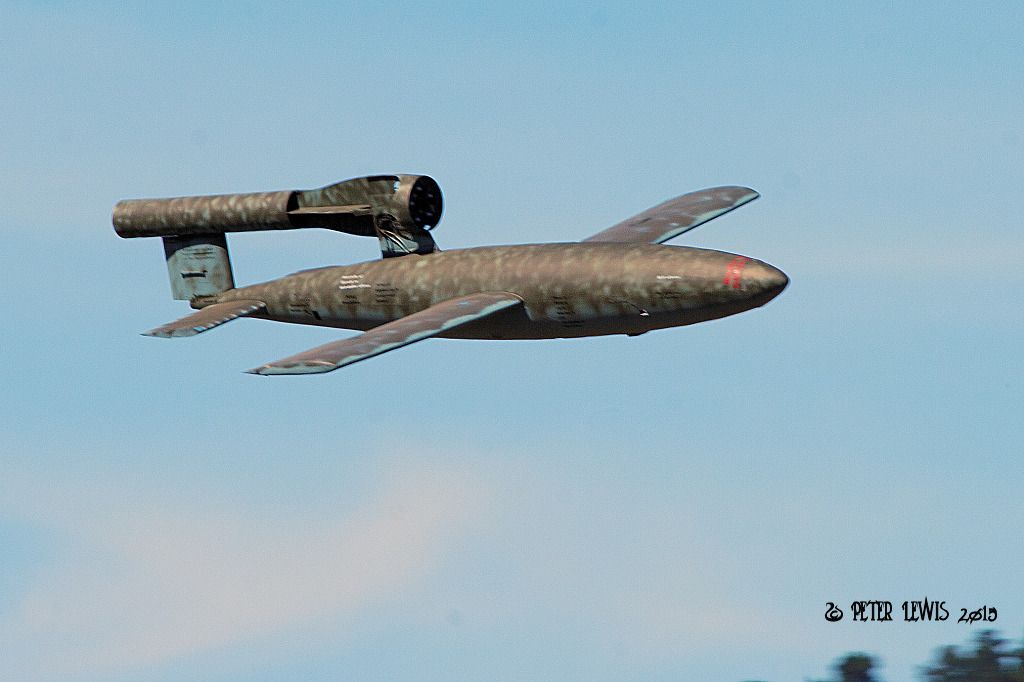 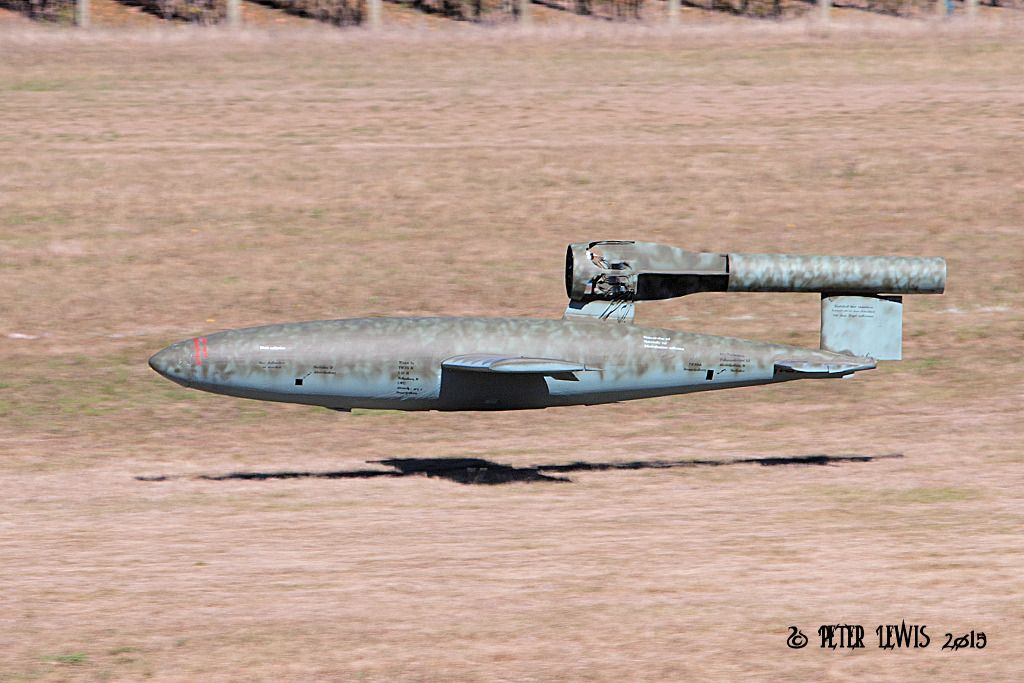 The crew have every reason to feel proud.  |
|
|
|
Post by Dave Homewood on Jun 14, 2015 9:11:08 GMT 12
That V1 was certainly one of the really great spectacles I have seen at any airshow, and from the crowd reaction each day I think everyone else was very impressed too. The team behind it rightly were given an award at the awards dinner on the Sunday for their awesome achievement.
|
|



